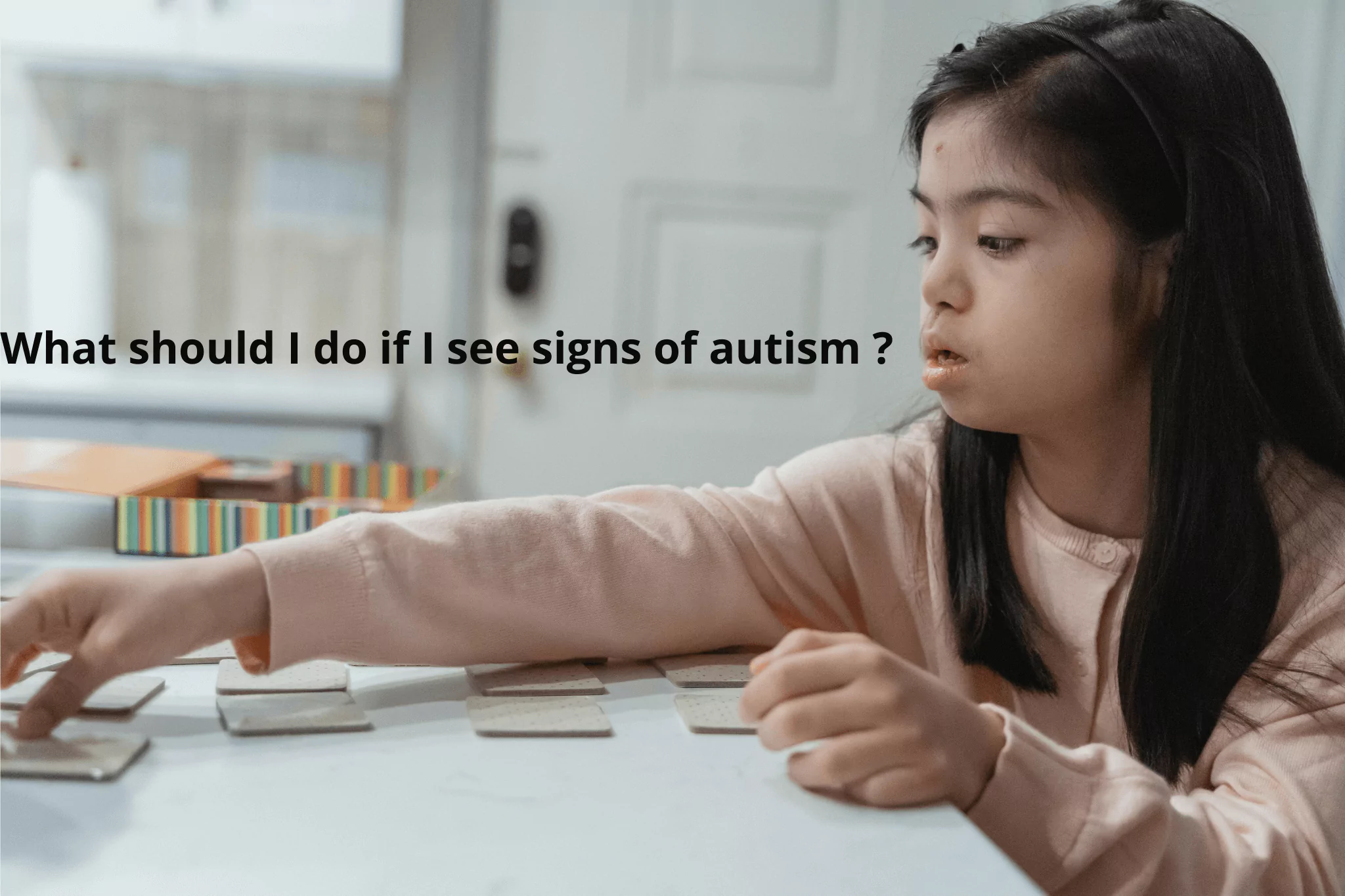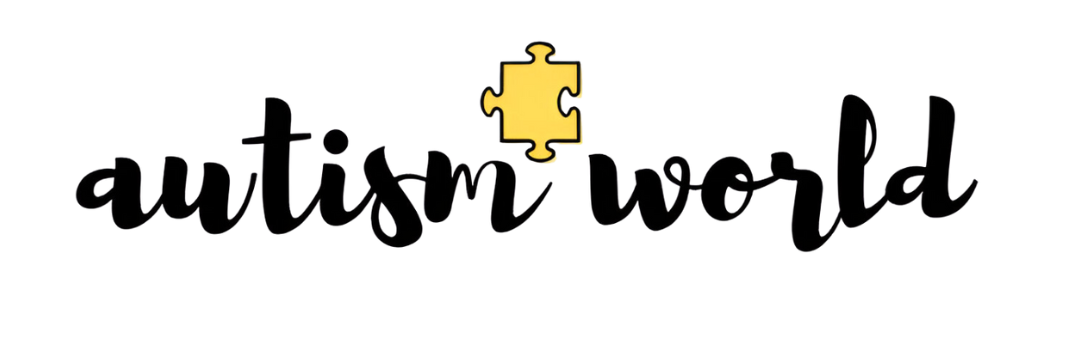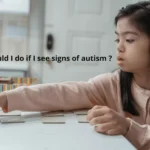With 9 years of experience in the kitchen, I’m passionate about crafting delicious recipes and sharing them with food lovers worldwide. 🍽️✨ Whether it’s a comforting homemade dish or a creative cocktail, my goal is to make cooking fun, easy, and enjoyable for everyone. Join me on this flavorful journey! 🍹🥗

What should I do if I see signs of autism? [5 Critical Steps]
What to Do If You Notice Signs of Autism: A Comprehensive Guide
Discovering potential signs of autism in a child can be a worrying experience for any parent or caregiver. It’s important to remember that early intervention is key and that there are clear steps you can take to ensure the best possible outcome. This comprehensive guide will walk you through exactly what actions to take if you observe potential indicators of autism, providing actionable advice and resources to help you navigate this journey. This guide will outline the critical steps to take, ensuring your child receives the support and understanding they need to thrive. Our goal is to empower you with the knowledge and tools to make informed decisions and advocate effectively for your child’s well-being.
Introduction
Autism Spectrum Disorder (ASD) is a complex neurodevelopmental condition that affects how a person interacts with the world, communicates, learns, and behaves. It is a spectrum disorder, meaning that its symptoms and severity can vary widely from person to person. While there is no single cause of autism, research suggests a combination of genetic and environmental factors may play a role. Understanding the spectrum nature of autism is crucial, as individuals with ASD may possess a wide range of strengths and challenges. Early recognition of potential signs allows for timely intervention, which can significantly improve long-term outcomes. The journey of understanding and supporting a child with autism begins with recognizing potential signs and knowing the steps to take.
If you’re unsure about the services we provide, please visit our services page to learn more.
Recognizing Potential Signs of Autism
The signs of autism can be present from early infancy, but are sometimes more subtle and become noticeable as children develop. It’s important to remember that every child develops at their own pace, and not all children who exhibit some of these signs will be diagnosed with autism. However, being aware of these potential indicators is the first step in determining the appropriate actions to take. The Centers for Disease Control and Prevention (CDC) is a great resource for up-to-date information.
Common Early Signs of Autism (Ages 0-3)
- Lack of eye contact: Avoiding or infrequent eye contact is a common indicator.
- Limited response to name: Not responding to their name by 12 months of age.
- Repetitive behaviors: Engaging in repetitive movements like hand-flapping, rocking, or spinning.
- Speech delays: Delayed speech development or difficulty communicating verbally.
- Difficulty with social interaction: Showing little interest in playing with other children or engaging in social games.
- Unusual sensory sensitivities: Being overly sensitive to certain sounds, textures, lights, or smells.
- Strong attachment to routines: Becoming distressed by changes in routine or environment.
- Unusual interests: Exhibiting intense and focused interests in specific objects or topics.
- Difficulties with pretend play: Having trouble engaging in imaginative or symbolic play.
Signs of Autism in Older Children and Adolescents
- Challenges with social communication: Difficulty understanding social cues, body language, or sarcasm.
- Difficulties with reciprocal conversation: Struggling to engage in back-and-forth conversations or maintaining social interactions.
- Repetitive behaviors and interests: Continuing to engage in repetitive behaviors and exhibiting strong, narrow interests.
- Difficulties with emotional regulation: Experiencing difficulties managing emotions and expressing them appropriately.
- Executive function challenges: Struggling with organization, planning, and task completion.
- Difficulties with abstract concepts: Having trouble understanding abstract ideas or metaphors.
- Sensory sensitivities: Continuing to experience heightened or diminished sensory sensitivities.
It’s crucial to observe the child’s behavior across various settings and situations to gain a comprehensive understanding. Consulting with a pediatrician or other healthcare professional is essential for further evaluation.
Documenting Your Observations
One of the most important steps in determining the next steps is to keep a detailed record of your observations. This documentation will be invaluable when you consult with healthcare professionals and educators. Detailed notes provide professionals with a clearer picture of the child’s behavior, developmental patterns, and specific challenges.
What to Include in Your Documentation
- Specific behaviors: Describe the specific behaviors you have observed, including when and where they occurred.
- Frequency of behaviors: Note how often the behaviors occur and if there are any triggers or patterns.
- Context of behaviors: Explain the context in which the behaviors occur, such as during playtime, meals, or social interactions.
- Communication patterns: Describe the child’s communication style, including verbal and nonverbal communication.
- Social interactions: Document how the child interacts with peers and adults, including their ability to initiate and maintain relationships.
- Sensory sensitivities: Note any sensory sensitivities, such as reactions to loud noises, bright lights, or certain textures.
- Developmental milestones: Track the child’s progress in reaching developmental milestones, such as walking, talking, and social skills.
- Any changes in behavior: Note any significant changes in behavior, such as increased anxiety or withdrawal.
Using videos and photographs can also be helpful to illustrate specific behaviors. Remember to keep your observations objective and factual, focusing on what you see and hear rather than making assumptions or judgments. This thorough documentation will significantly assist professionals in evaluating the child’s development and determining the next steps.
Seeking Professional Assessment
If you’ve observed concerning signs and have documented your observations, the next crucial step is to seek a professional assessment. Early and accurate diagnosis is paramount in determining the best course of action. This assessment typically involves a multidisciplinary team of experts who specialize in developmental pediatrics, psychology, and speech-language pathology. A comprehensive evaluation can help determine if a child meets the criteria for an ASD diagnosis.
Who to Contact for an Assessment
- Pediatrician: Your child’s pediatrician is the first point of contact. They can conduct an initial screening and refer you to specialists.
- Developmental Pediatrician: These pediatricians specialize in diagnosing and treating developmental disorders, including autism.
- Child Psychologist or Psychiatrist: These professionals can conduct psychological assessments and provide diagnoses based on behavioral observations and standardized tests.
- Speech-Language Pathologist (SLP): SLPs evaluate communication skills and identify any language or speech delays that may be indicative of autism.
- Occupational Therapist (OT): OTs assess sensory processing and motor skills, identifying any challenges related to sensory sensitivities or motor coordination.
What to Expect During the Assessment Process
- Medical History: Gathering information about the child’s medical history, developmental milestones, and family history of developmental disorders.
- Behavioral Observations: Observing the child’s behavior in various settings, such as during play, social interactions, and structured tasks.
- Standardized Tests: Administering standardized tests to assess cognitive abilities, language skills, social skills, and adaptive behavior.
- Parent Interviews: Conducting interviews with parents or caregivers to gather information about the child’s behavior and development at home and in other environments.
- Diagnostic Criteria: Comparing the child’s symptoms and behaviors to the diagnostic criteria outlined in the Diagnostic and Statistical Manual of Mental Disorders (DSM-5).
The assessment process may take several weeks or months to complete, as it often involves multiple appointments and evaluations. It’s essential to be patient and cooperative throughout the process, providing as much information as possible to the assessment team. A comprehensive assessment will provide valuable insights into the child’s development and guide future interventions.
Understanding the Diagnosis and Next Steps
Receiving an autism diagnosis can be overwhelming for parents and caregivers. It’s crucial to remember that a diagnosis is not a label but rather a starting point for understanding the child’s unique needs and developing effective support strategies. Understanding the post-diagnosis phase is essential, where informed decisions and proactive steps can significantly impact the child’s development and well-being.
Interpreting the Diagnostic Report
The diagnostic report will provide a detailed summary of the assessment findings, including the specific criteria that were met for an ASD diagnosis. It will also outline the child’s strengths and challenges, as well as recommendations for intervention and support. It’s important to thoroughly review the report with the assessment team, asking questions and seeking clarification on any areas that are unclear.
Navigating the Diagnostic Criteria
The DSM-5 outlines the diagnostic criteria for ASD, which includes impairments in social communication and interaction, as well as restricted and repetitive patterns of behavior, interests, or activities. The severity of these symptoms is rated on a spectrum, ranging from mild to severe. Understanding the specific criteria and severity level can help you better understand the child’s unique challenges and needs.
Developing a Support Plan
Following a diagnosis, it’s essential to develop a comprehensive support plan that addresses the child’s specific needs and goals. This plan should involve a multidisciplinary team of professionals, including therapists, educators, and healthcare providers. The plan should outline specific interventions, therapies, and accommodations that will help the child thrive. Don’t hesitate to contact us if you require guidance.
Early Intervention Strategies and Support
Early intervention is critical for children with autism. Research has shown that the earlier interventions are implemented, the better the long-term outcomes. Early intervention programs focus on addressing the child’s specific needs, promoting development, and teaching essential skills. Knowing the steps to take includes actively engaging in early intervention strategies.
Types of Early Intervention Therapies
- Applied Behavior Analysis (ABA): ABA is a widely recognized and evidence-based therapy that focuses on teaching skills and reducing challenging behaviors using positive reinforcement techniques.
- Speech Therapy: Speech therapy helps children develop communication skills, including verbal and nonverbal communication.
- Occupational Therapy: Occupational therapy addresses sensory processing issues, motor skills, and adaptive skills.
- Social Skills Training: Social skills training helps children learn how to interact with others, understand social cues, and build relationships.
- Developmental Therapies: Developmental therapies focus on promoting overall development, including cognitive, social, and emotional skills.
Creating a Supportive Home Environment
Creating a supportive and structured home environment is essential for children with autism. This includes establishing consistent routines, providing clear expectations, and using visual supports to aid understanding. It also involves creating a sensory-friendly environment by minimizing sensory overload and providing opportunities for sensory regulation.
Working with Educators
Collaborating with educators is crucial for ensuring that children with autism receive appropriate support and accommodations in the school setting. This includes developing an Individualized Education Program (IEP) that outlines the child’s specific needs, goals, and accommodations. It also involves ongoing communication and collaboration between parents, teachers, and other school professionals. You may find valuable resources on the Wikipedia page for Autism.
Ongoing Support and Resources
Navigating life with autism is an ongoing journey that requires continuous support and resources. Knowing the steps to take is only the beginning; accessing reliable information and support networks is crucial for both the child and their family. There are numerous organizations and resources available to provide information, guidance, and support.
Autism Support Organizations
- Autism Speaks: A leading autism advocacy organization that provides information, resources, and support for families and individuals with autism.
- The Autism Society: A grassroots organization that provides support, advocacy, and education for individuals with autism and their families.
- National Autism Center: An organization that promotes evidence-based practices and provides training and resources for professionals and families.
Parent Support Groups
Joining a parent support group can provide valuable emotional support and practical advice. Support groups offer a safe space for parents to share their experiences, learn from others, and build a sense of community.
Online Resources
Numerous online resources provide information, support, and practical tips for parents and caregivers of children with autism. These resources include websites, blogs, forums, and social media groups.
We are here to help! Visit our about page to learn more about our team and mission.




